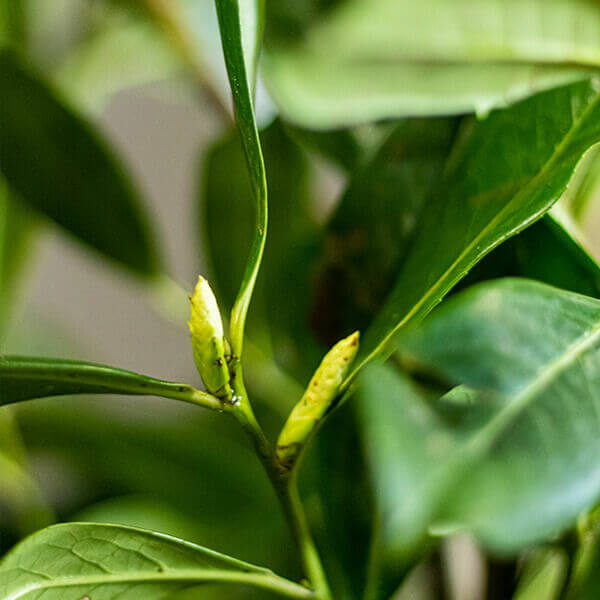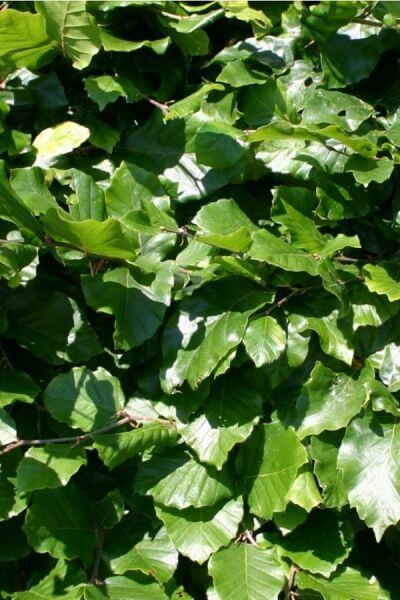Hedge Plants For Outdoor Layout
Hedge Plants For Outdoor Layout
Blog Article
Hedge Plants For Creating Hedges
Boost your garden's allure with lavish hedge ranges such as Yew (Taxus), Thuja, Laurel, Photinia, and Bamboo, commemorated for their structural stability and ecological advantages.
Yew and Thuja provide evergreen coverage and winter season durability, while Laurel uses quick growth and broad, aromatic leaves.
Photinia adds seasonal appeal with its vibrant red foliage, and Bamboo provides a low-maintenance, serene ambiance.
These hedges enhance air quality, reduce noise, and develop tranquil, private spaces.
Correct planting, spacing, and upkeep ensure vigorous development and eco-friendly harmony.
Explore how these rich ranges can elevate your garden's charm and wellness.
Secret Takeaways
Transform Your Garden With Lush Hedge Ranges
- Select Yew for its thick, evergreen development and unrivaled durability.
- Select Laurel for its fast development and broad leaves, making sure fast personal privacy.
- Choose Photinia for its dynamic seasonal foliage, which turns a striking dark red.
- Use Bamboo for a low-maintenance, winter-hardy hedge with visual appeal.
- Area plants 2-3 per meter and prune frequently for optimum growth and health.
Popular Hedge Plants
When changing a garden with rich hedge ranges, it's necessary to think about popular hedge plants such as Yew, Thuja, Laurel, and Photinia due to their special attributes and advantages.
Yew (Taxus) is extremely respected for its durability and thick, green growth, making it a prime choice for withstanding landscapes.
Thuja is noted for its evergreen foliage and robust winter season strength.
Photinia includes seasonal vibrancy with red leaves that darken over time, creating vibrant visual appeal.
Laurel uses rapid development and aromatic, broad leaves, perfect for fast personal privacy.
In Addition, Bamboo is an excellent choice for ambiance, offering a low-maintenance, winter-hardy option that improves the garden's visual with its classy, swaying walking sticks.
These selections accommodate a variety of horticultural requirements and preferences.
Advantages of Garden Hedges
Garden hedges provide a wide variety of benefits, making them a valuable addition to any landscape. These natural barriers are cost-effective to carry out and provide substantial wind protection, enhancing air blood circulation and contributing to noise reduction. The thick foliage of hedges like Thuja and Beech guarantees privacy by blocking exposure, creating a tranquil and remote environment.
Hedges also play an essential role in microclimate guideline, offering a stable environment that fosters plant development and reduces temperature level changes. Their intricate leaf structures filter contaminants, improving air quality and contributing to a much healthier garden community.
Additionally, hedges excel in sound reduction, soaking up and deflecting sound waves to lower ambient noise levels. This double functionality of offering both visual and acoustic personal privacy enhances the general harmony and aesthetic appeal of any garden.
Planting and Maintenance Tips
For an effective hedge, meticulous preparation of the planting area is vital. Ensure the soil has appropriate pH and drain to support strong root advancement.
Space the plants appropriately for the picked types. Water the hedge frequently during its preliminary development phase, adjusting as needed with seasonal modifications.
Carry out a organized pest control and disease avoidance method, using chemical or organic treatments when needed. Frequently inspect for aphids, mites, and fungal infections.
Apply mulch to retain moisture and suppress weeds. Seasonal pruning promotes thick development and air flow, vital for plant health.
Following these guidelines will help you cultivate a dynamic, properly maintained hedge that boosts the beauty of your garden.
Spacing and Trimming Guidelines
Spacing and Trimming Standards
Correct spacing and cutting are important for cultivating healthy, visually appealing hedges. Adequate spacing makes sure each plant gets enough nutrients, light, and air flow.
Follow these guidelines for optimal hedge upkeep:
- Spacing: Position hedge plants 2-3 plants per meter to encourage robust growth.
- Pruning Methods: Routine pruning is important for maintaining wanted hedge height and shape. Cut new development in summertime and cut back older wood throughout winter.
- Seasonal Care: Change trimming approaches and schedules according to seasonal requirements to guarantee plant health.
- Hedge Height: Frequently screen and trim to keep the desired hedge height and accomplish uniform visual appeals.
Following these actions will ensure your hedge prospers, enhancing both the appeal and performance of your garden.
Selecting the Right Hedge
Picking the Right Hedge
Choosing the proper hedge involves assessing aspects such as mature height, foliage density, and environmental strength. Successful hedge plant selection needs comprehending each species' growth qualities and site-specific flexibility.
For example, Yew (Taxus) provides outstanding durability and dense growth, while Thuja is noteworthy for its winter season strength. In addition, considering maintenance requirements is essential; fast-growing species like Laurel or Privet demand routine cutting, whereas low-maintenance alternatives like Bamboo or Ivy may be preferable for those seeking minimal upkeep.
Environmental factors such as soil type, light availability, and moisture conditions ought to also direct the selection process. This careful method guarantees the selected hedges will flourish, offering both functional and visual advantages to the garden landscape.
Shipment and Planting Suggestions
To guarantee your hedge plants prosper, they must be provided by specialized couriers and planted quickly upon arrival.
Follow these essential actions for effective planting:
- Soil Preparation: Enhance the soil with organic matter to improve drain and nutrient material.
- Planting Depth: Produce a trench twice the width and equivalent to the depth of the root ball.
- Watering Methods: Water thoroughly after planting, keeping the soil regularly wet however not saturated.
- Mulching: Use a layer of mulch to keep moisture and reduce weeds.
Client Assistance and Service
Provided the essential role of prompt assistance in horticultural pursuits, our consumer support group is offered six days a week through telephone, e-mail, and social media to use expert suggestions and quickly address any issues. Their dedication to fast response times guarantees customer complete satisfaction by resolving inquiries related to plant health, ideal planting methods, and maintenance schedules.

Interaction Approach
Social network
This thorough assistance system, reinforced by an excellent 9.3/ 10 client score, highlights our commitment to boosting the gardening experience for each client.
Regularly Asked Questions
The Length Of Time Does It Take for Hedge Plants to Develop?
Hedge plants typically need one to three years to end up being completely developed, with the exact period varying by types and growing conditions.
Effective care throughout this critical period is necessary for robust growth. Constant watering, vigilant weed control, and suitable fertilizer application are essential in promoting strong root development.
For instance, fast-growing types like Laurel may establish faster, while slower-growing varieties such as Yew may take longer. Thorough maintenance speeds up the facility procedure, resulting in healthy and thick hedges.
What Are the Best Hedge Plants for Privacy?
The question of the finest hedge plants for personal privacy involves assessing evergreen and deciduous alternatives.
Evergreen hedges like Thuja, Laurel, and Cypress supply year-round coverage, guaranteeing continuous personal privacy.
On the other hand, deciduous hedges such as Beech use seasonal personal privacy, shedding leaves in colder months.
Key maintenance ideas for personal privacy hedges consist of routine cutting, fertilizing in spring, and correct spacing-- typically 2 to 3 plants per meter.
Additionally, consistent watering and diligent weed removal are essential for promoting healthy, dense growth.
Can Hedge Plants Attract Wildlife to My Garden?
Yes, hedge plants can attract wildlife to your garden by providing essential advantages like shelter, food, and nesting websites, therefore boosting regional biodiversity. Yew, holly, and laurel are outstanding for attracting birds, while ivy supports a variety of pests.
Nevertheless, it is very important to note that there are some drawbacks, such as increased upkeep to handle pests and regular maintenance. Carefully selecting and keeping hedge ranges can help stabilize these drawbacks and advantages, ultimately promoting a dynamic and sustainable ecosystem in your garden.
Exist Any Flowering Hedge Plants Available?
Yes, there are flowering hedge plants available that can boost the charm of your garden.
For example, Elaeagnus, likewise referred to as Olive Willow, produces aromatic white flowers in the fall, adding a touch of sophistication.
Photinia, another popular choice, showcases lively red leaves that develop into an abundant green, producing a vibrant visual impact throughout the seasons.
To make sure these plants prosper, it's necessary to practice appropriate pruning techniques and seasonal maintenance, such as cutting new development in the summer and cutting down in the winter season.
These measures will assist maintain the health and aesthetic appeal of your blooming hedges.
How Do I Avoid Pests in My Hedge Plants?
To avoid bugs in hedge plants, employ natural insect control approaches and maintain appropriate hedge care. Present beneficial bugs like ladybugs, which victimize damaging pests, to produce a well balanced environment.
Regularly inspect your hedges for signs website of invasion and without delay eliminate any afflicted parts to avoid the spread. Make sure the health of your hedges by using well balanced fertilizers and providing adequate water.
Utilize mulching to keep soil wetness and correct spacing to lower plant tension and promote robust growth. These practices collectively help in minimizing pest issues and maintaining a healthy hedge.
Conclusion
In essence, choosing the right hedge varieties such as Yew, Thuja, and Laurel can transform any garden into a tranquil sanctuary. These plants supply year-round plant, boost visual appeal, and offer practical benefits like noise decrease and wind defense.
Correct planting methods, accurate spacing, consistent watering, and seasonal cutting are essential for optimum growth.
Trustworthy delivery services and expert customer assistance guarantee a seamless experience from purchase to planting, making it easier than ever to raise your outdoor space.
Garden hedges use a wide variety of benefits, making them an important addition to any landscape. These natural barriers are economical to execute and provide substantial wind security, boosting air flow and contributing to noise decrease. The dense foliage of hedges like Thuja and Beech makes sure privacy by blocking exposure, creating a remote and serene environment.

Pruning Techniques: Regular pruning is essential for keeping wanted hedge height and shape. Cut new growth in summer and cut back older wood throughout winter season.
Report this page